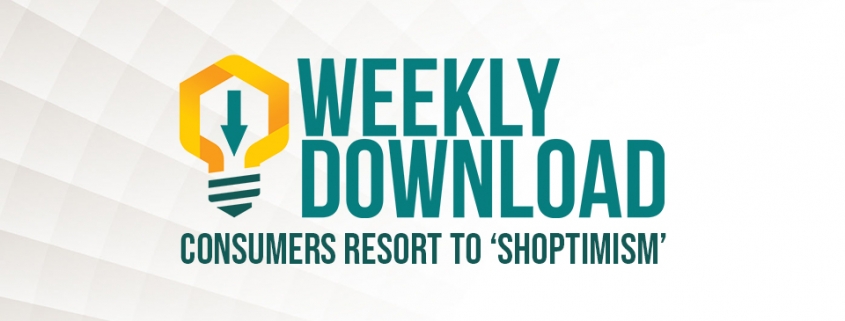The Weekly Download: Consumers Resort to ‘Shoptimism’
Shoptimism is a term being used to describe purchases made from home during the pandemic. You are stuck at home and suddenly begin to see every flaw, paint chip and cluttered closet. So, you buy things to fix the situation — or you buy things to make you feel better about it.
When consumers buy things they don’t need, such as luxury items, in the middle of a public health crisis, it’s called “shoptimism.” This term was coined by Lee Eisenberg in his 2009 book of the same title.
Why Do We Buy Things?
According to Eisenberg, people buy things to provide emotional relief from the anxiety of living in a pandemic and economically uncertain times. He describes two kinds of buyers. The classic buyer compares prices, deliberates on whether they need a product and then makes a purchase. The romantic buyer shops emotionally, purchasing trendy or “cool” items that boost their emotional state. In general, the romantic buyer cares about the emotional satisfaction of the purchase rather than the utility of the product.
E-commerce and M-commerce
Consumers are used to the convenience of online shopping (e-commerce), especially via their mobile devices (m-commerce). The click-and-collect culture isn’t going anywhere soon. Not only is it safer but the convenience and faster delivery times make it easier than shopping in stores. Generous return policies sealed the deal.
The rise of in-store pickup makes it easy to order online, drive up for contactless service and refuse any items that do not meet your expectations. This frictionless experience has risen due to the global pandemic, but consumers are likely to demand it for long afterwards.
Savvy brands will continue to capitalize on this moving into 2021. Even shoppers who do visit traditional stores now pre-research products and services online. Vendors who cannot meet consumers in cyberspace may find themselves pushed aside by competitors with a strong digital presence.
Contactless Shopping
Contactless shopping and payment provide a safe way for consumers to purchase online and pick up at participating stores. Consumers can also use the technology to shop or pay for items at retail stores.
Using biometrics and Amazon One technology, consumers scan one palm to make purchases at participating stores. Privacy advocates are watching the new technology as closely as facial-recognition software, which raised concerns with the ACLU and other advocate groups.
The technology does not require physical contact and palm images are encrypted in the cloud rather than on local devices. Users can delete their Amazon one account if security becomes a concern.
Younger Generations Are Exhibiting Shoptimism
Generation Z has been hit hard by the pandemic employment situation. The youngest generation in the workforce is often the first let go in a downturn and those graduating from college may have a harder time finding employment in their field.
Research from Smart Company, an Australian publication, showed a rise in purchases among Gen Z shoppers from shopping platforms offering payment plans. These shoppers appreciated the safety, anonymity and speed of online transactions. Perhaps that’s why usage of e-commerce and m-commerce is increasingly popular among demographically younger shoppers.
Shoptimism goes beyond the recent tendency of homebound consumers to make frivolous purchases online. New technology and changing consumer expectations make it imperative that businesses take their brands to the internet if they want to attract consumers away from competitors.


